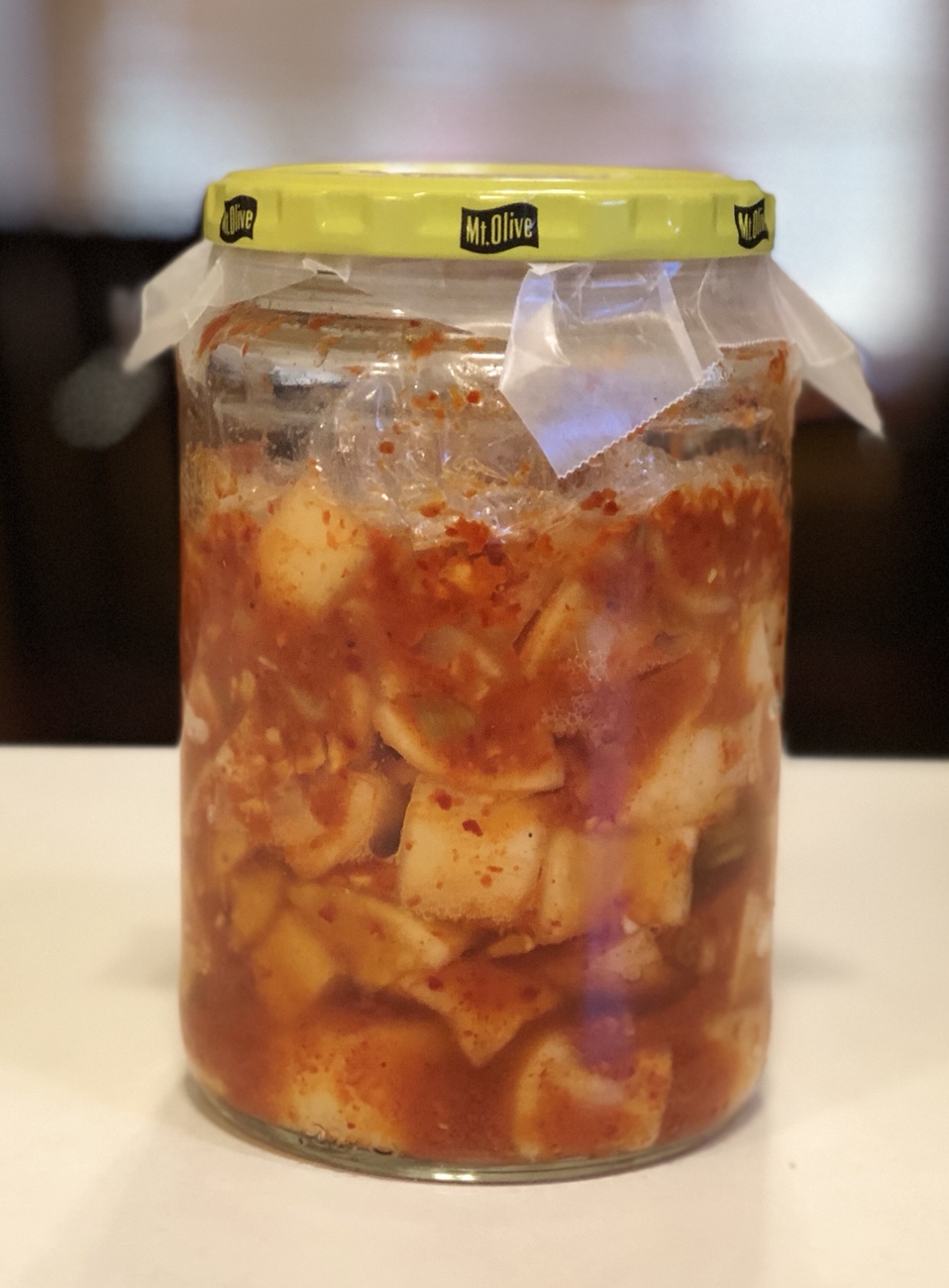
I typically make two quart jars of my favorite kimchi, kkakdugi, at a time. The last time I did, though, the second jar became a bit too fermented (it gets very soft and loses that radish crunchiness I like) for my taste. With a lonely, soon-to-be-rubbery daikon in the crisper drawer, it simply made sense to make a small batch of this spicy probiotic condiment.
While making kkakdugi, images of clay pots full of kimchi buried in the ground danced through my head. It’s how it was traditionally stored in Korea…and it’s an incredibly practical method: the cold ground slows the fermentation process so that it ripens more slowly and, thus, lasts longer. Read more about this fascinating process here. And JinJoo’s flow chart is a must see!
The modern way of storing kimchi (aside from in a standard refrigerator, where the fragrance of the ferment may permeate everything else) is in a “kimchi refrigerator“, a specially-designed appliance. This highly specialized appliance is for those who are serious about making (and eating) kimchi, and the pricing reflects it: a Dimchae Kimchi Refrigerator 180L (6.35 cu ft) is listed on Amazon for a cool $1699.99.
But I digress – back to the homemade kkakdugi. The daikon came in at slightly over a pound on my food scale, so I was able to quarter the recipe easily. I chopped up the daikon, salted and sugared it, and waited a half hour. While waiting, I minced the scallions, garlic, and ginger. When the time elapsed, I mixed the rest of the ingredients, including the Korean hot pepper flakes (gochugaru, 고추가루).
The aromatic mixture was then packed into a glass jar, closed tightly, and left to ferment at room temperature. After burping it daily (for two days) and pressing the cubes down into the liquid, I moved it into the fridge to slow the fermentation. Some people may prefer a longer room-temperature fermentation period, but I like it fresh – in fact, I’d eat it right after it was mixed, before the fermentation had begun, but I restrain myself so I can enjoy the probiotic benefits, too. Kimchi is fabulous all year, but it just seems so right for cold weather. This jar won’t last long!
